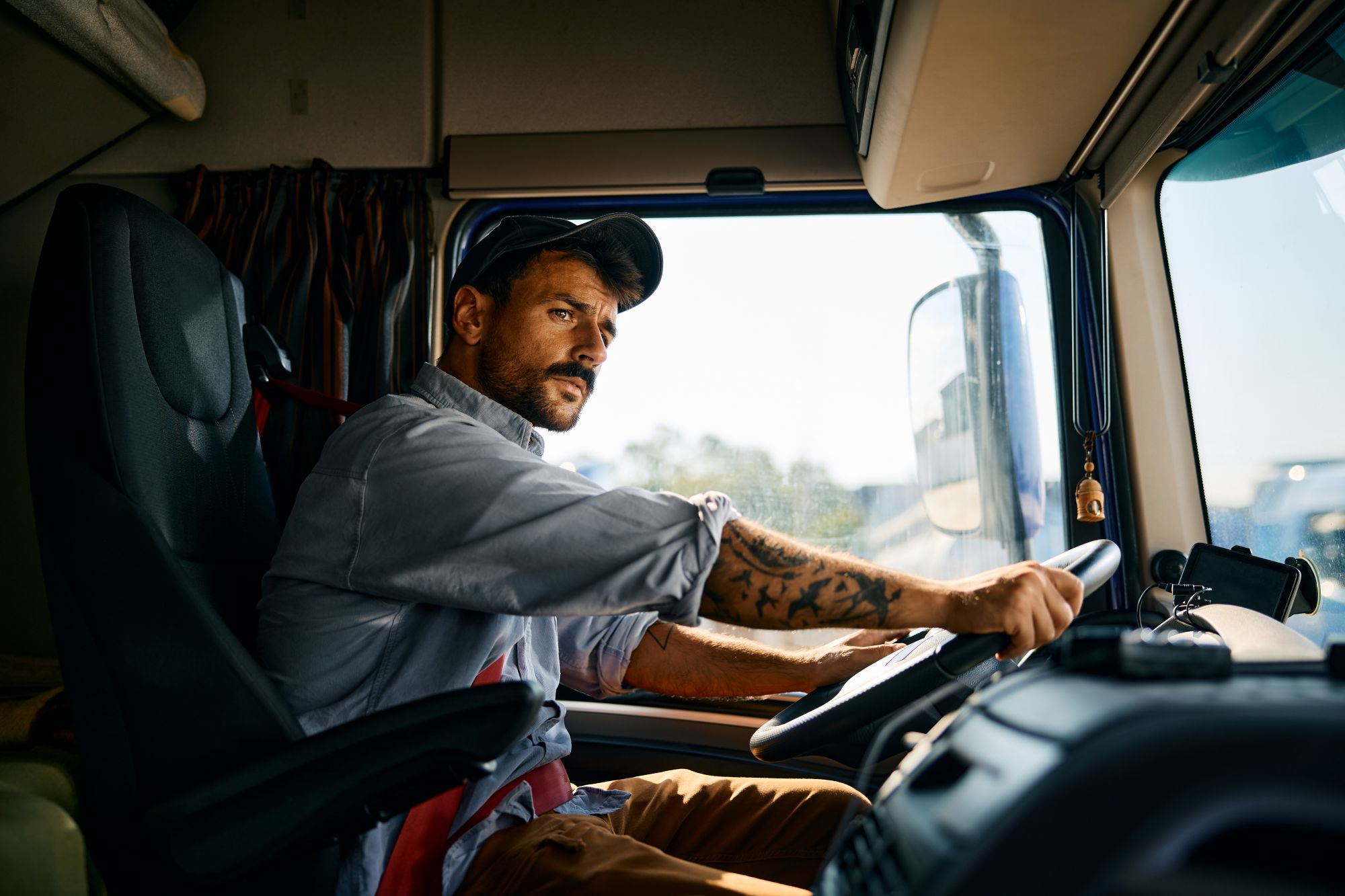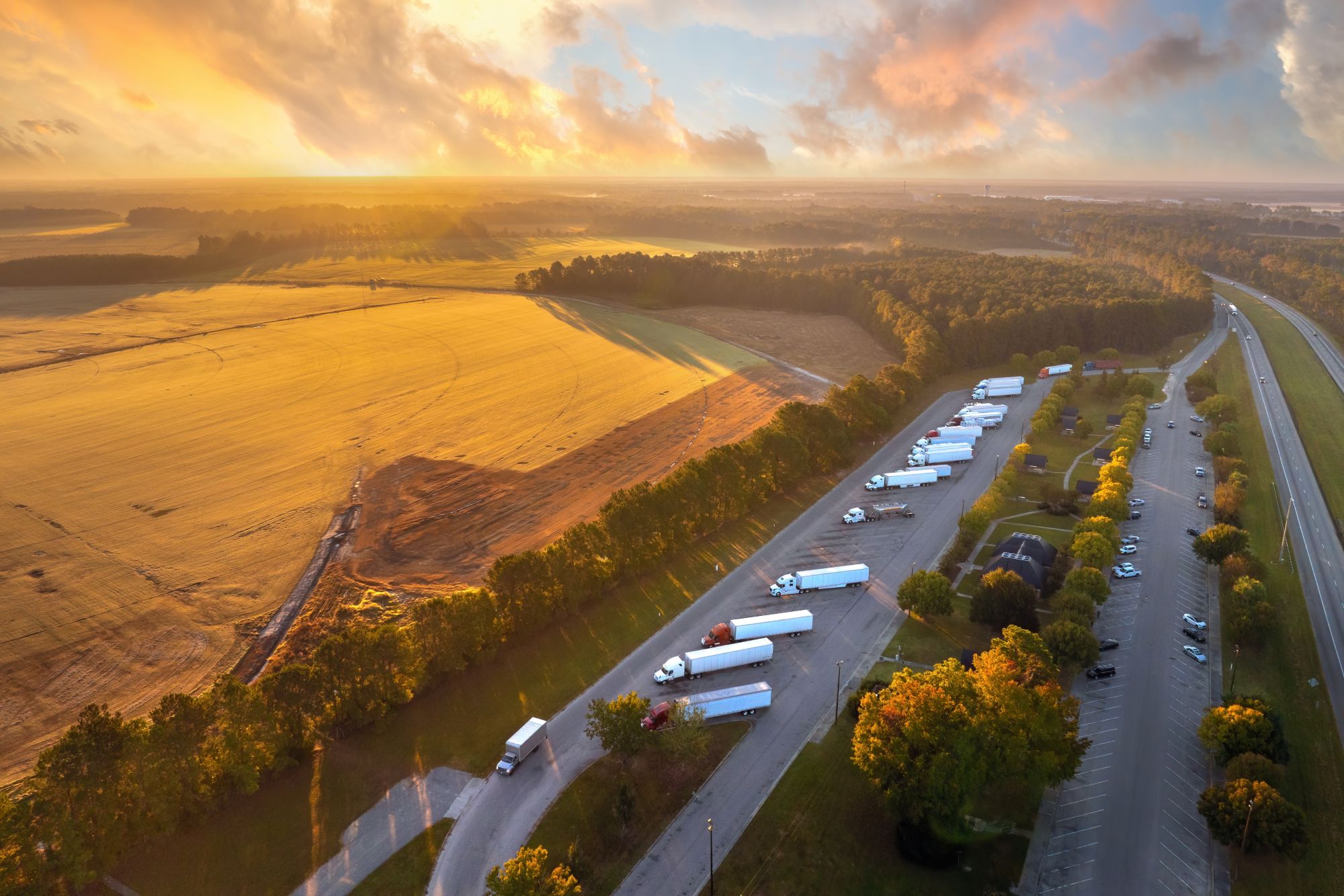
Guest
Hoe word ik vrachtwagenchauffeur?
Gemaakt: 26-09-2025
•
Bijgewerkt: 26-09-2025
In heel Europa is de vraag naar professionele vrachtwagenchauffeurs nog nooit zo groot geweest. In het Verenigd Koninkrijk schat de Road Haulage Association dat 200.000 nieuwe vrachtwagenchauffeurs nodig zullen zijn in de komende vijf jaar om de toeleveringsketens draaiende te houden. En de situatie is hetzelfde in het grootste deel van Europa. Volgens gegevens van de International Road Transport Union waren er in 2024 in heel Europa 426.000 vacatures voor chauffeurs.
Maar dit biedt kansen. Zoals we eerder hebben onderzocht, biedt de transportsector uitzicht op vast werk voor schoolverlaters die alternatieven voor de universiteit overwegen en volwassenen die zich willen omscholen. Vrachtwagenchauffeur worden biedt uitzicht op een vast inkomen en een gestructureerde carrière.
De vraag die velen zich stellen is: hoe word je vrachtwagenchauffeur? Het antwoord hangt niet alleen af van opleiding en rijbewijzen, maar ook van wat het betekent om deel uit te maken van een beroep dat de Europese economie in beweging houdt.
Wie kan vrachtwagenchauffeur worden?
Een van de grootste voordelen van een carrière als vrachtwagenchauffeur is de toegankelijkheid. Je hebt geen universitair diploma of jaren van specialistische training nodig om te beginnen; een standaard autorijbewijs (categorie B) is alles wat nodig is voordat je aan professionele kwalificaties kunt werken.
Zowel in het Verenigd Koninkrijk als in de EU is de minimumleeftijd voor de opleiding 18 jaar, wat betekent dat schoolverlaters direct kunnen overstappen van een autorijbewijs naar een professionele opleiding tot vrachtwagenchauffeur. Veel bedrijven geven er echter de voorkeur aan dat internationale chauffeurs minstens 21 jaar oud zijn, gezien de extra verantwoordelijkheid die komt kijken bij langeafstandstransport.
Medische geschiktheid is ook belangrijk. Elke aanvrager moet een medische keuring ondergaan voordat hij of zij een vrachtwagenrijbewijs kan krijgen. In het Verenigd Koninkrijk houdt dit een reeks tests in, waaronder controles van het gezichtsvermogen, bloeddrukmetingen en screening op aandoeningen zoals epilepsie, hartaandoeningen of slaapapneu.
Europese landen passen dezelfde EU-brede medische normen toe, waarbij regelmatige vernieuwingen ervoor zorgen dat bestuurders hun hele carrière gezond blijven.
Hoeveel verdient een vrachtwagenchauffeur?
Voor veel mensen die de overstap naar het beroep van vrachtwagenchauffeur overwegen, is een belangrijke vraag: hoeveel verdienen vrachtwagenchauffeurs?
Het antwoord varieert afhankelijk van de locatie, ervaring en het soort werk, maar in heel Europa biedt het beroep een concurrerend salaris vergeleken met andere banen op instapniveau.
Een nieuwe chauffeur in het Verenigd Koninkrijk [begint] (https://nationalcareers.service.gov.uk/job-profiles/large-goods-vehicle-driver) meestal rond de £27.000 per jaar. Degenen die de overstap maken naar langeafstandswerk, vooral op internationale routes, kunnen hun loon zien stijgen naar £45.000 - soms meer als ze specialistische of gevaarlijke ladingen vervoeren. die specialistische ladingen of gevaarlijke goederen vervoeren of grensoverschrijdend werken.
In [Spanje] (https://www.salaryexpert.com/salary/job/truck-driver/spain) zijn de salarissen over het algemeen lager dan in het VK, meestal rond €36.600, hoewel grote logistieke bedrijven in grote steden meer kunnen bieden.
● Polen heeft de afgelopen jaren een sterke vraag naar chauffeurs gezien, maar de lonen blijven bescheiden, gemiddeld rond de 92.400 PLN (ongeveer €21.690).
● Roemenië zit aan de onderkant van de schaal, met chauffeurs die over het algemeen 80.550 RON (€16.000) verdienen, hoewel internationale transportcontracten het loon aanzienlijk kunnen verhogen.
Natuurlijk is salaris niet het hele verhaal. Veel bedrijven bieden overuren, maaltijdvergoedingen of bonussen voor het behalen van de leveringsdoelen. En omdat de vraag naar chauffeurs niet lijkt af te nemen, biedt de baan ook een mate van zekerheid die weinig andere carrières op instapniveau kunnen evenaren.
Welk vrachtwagenrijbewijs heb ik nodig?
Voordat je achter het stuur van een vrachtwagen kunt kruipen, heb je het juiste rijbewijs nodig. In het Verenigd Koninkrijk betekent dit dat je verder moet gaan dan een standaard autorijbewijs en officieel een LGV-rijbewijs (Large Goods Vehicle) of HGV-rijbewijs (Heavy Goods Vehicle) moet hebben. De termen worden vaak door elkaar gebruikt, maar beide hebben betrekking op dezelfde categorieën van professioneel rijden.
Sommige mensen beginnen met een categorie C1-rijbewijs, dat betrekking heeft op middelgrote voertuigen tussen 3,5 en 7,5 ton - vaak gebruikt voor kleinere bestelwagens.
De meeste aspirant-vrachtwagenchauffeurs kiezen echter direct voor het rijbewijs categorie C, ook wel het klasse 2 vrachtwagenrijbewijs genoemd. Hiermee mag je starre voertuigen van meer dan 7,5 ton besturen. Voor degenen die willen doorgroeien naar gelede vrachtwagens - de grotere voertuigen die vaak worden gebruikt op lange afstanden en internationale routes - is het rijbewijs categorie CE (klasse 1) vereist.
Naast deze kwalificaties zit het Driver Certificate of Professional Competence (CPC), een wettelijke vereiste in zowel het Verenigd Koninkrijk als de EU. Dit certificaat bestaat uit een mix van initiële training en periodieke opfriscursussen, bedoeld om bestuurders op de hoogte te houden van veiligheid, regelgeving en verkeersvaardigheden.
Dit systeem is een afspiegeling van het EU-brede licentiekader. De belangrijkste verschillen tussen landen zitten in de aanbieders van opleidingen, de kosten die ermee gemoeid zijn en, op sommige plaatsen, de beschikbaarheid van testslots.

Hoe haal ik mijn vrachtwagenrijbewijs?
Het behalen van je vrachtwagenrijbewijs is de eerste stap naar professioneel rijden. In het Verenigd Koninkrijk kun je met dit proces beginnen zodra je in het bezit bent van een standaardrijbewijs voor personenauto's van categorie B. Vervolgens vraag je een voorlopig vrachtwagenrijbewijs aan. Vervolgens vraag je een voorlopig vrachtwagenrijbewijs aan, waarmee je kunt beginnen met de opleiding voor grote vrachtwagens.
De training zelf combineert theorie en praktijk: klassikale sessies over verkeersveiligheid en regelgeving, gevolgd door rijden in zware voertuigen onder toezicht. Kandidaten moeten ook modules voltooien voor het Driver Certificate of Professional Competence (CPC), dat ervoor zorgt dat chauffeurs niet alleen zijn toegerust om voertuigen veilig te besturen, maar ook om de dagelijkse eisen van het transport te beheersen.
Hoeveel kost het om vrachtwagenchauffeur te worden?
Een van de meest voorkomende vragen voor iedereen die deze carrière overweegt, is hoeveel de opleiding tot vrachtwagenchauffeur kost. In het Verenigd Koninkrijk variëren de prijzen afhankelijk van de aanbieder, de locatie en of je een opleiding volgt voor een categorie C-rijbewijs of voor het meer geavanceerde categorie CE-rijbewijs. Gemiddeld moeten nieuwe chauffeurs rekenen op een bedrag tussen £2.000 en £3.500 voor medische controles, kosten voor het voorlopig rijbewijs, theorietoetsen, praktijktraining, CPC-modules en het laatste rijexamen. Sommige bedrijven, vooral grotere logistieke bedrijven, bieden regelingen aan om de opleiding te subsidiëren of volledig te financieren in ruil voor een werkverplichting, waardoor het traject toegankelijker wordt.
Elders in Europa zijn de cijfers niet veel anders. In Spanje kost een opleiding over het algemeen tussen de € 2.000 en € 3.000 voor een volledige opleiding en certificering. In Polen ligt dit cijfer lager, gemiddeld tussen de € 1.500 en € 2.500. Roemenië heeft een van de laagste opleidingskosten in Europa, met veel kandidaten die rond de €1.000 tot €1.800 betalen om zich te kwalificeren, hoewel de lonen op instapniveau over het algemeen deze lagere toetredingsdrempel weerspiegelen.
Hoe lang duurt het om vrachtwagenchauffeur te worden?
De tijd die je nodig hebt om je te kwalificeren als vrachtwagenchauffeur hangt af van waar je de opleiding volgt, het soort rijbewijs dat je wilt halen en hoe snel je testdata kunt regelen. In het Verenigd Koninkrijk voltooien de meeste mensen hun opleiding en slagen ze binnen twee tot vier maanden voor hun examen. Sommige intensieve cursussen comprimeren het proces in een paar weken, maar veel chauffeurs vinden dat ze de vaardigheden beter kunnen absorberen als ze de lessen uitstellen.
In Spanje en Polen is het proces vergelijkbaar, hoewel langere wachtlijsten voor examenplaatsen de tijd kunnen verlengen. In Polen heeft de grote vraag naar beroepschauffeurs geleid tot knelpunten bij de opleidingscentra, waardoor sommige kandidaten maanden moeten wachten op hun praktijkexamen. Roemenië heeft een van de snelste trajecten, waarbij de opleiding en het examen vaak binnen acht tot twaalf weken zijn afgerond.
En het leren houdt niet op als je eenmaal je rijbewijs hebt. Elke professionele chauffeur moet elke vijf jaar 35 uur CPC-training volgen om zijn vaardigheden up-to-date te houden en ervoor te zorgen dat hij klaar is voor de nieuwste voorschriften en veiligheidsnormen.
Hoe lang mag een vrachtwagenchauffeur rijden?
Als je eenmaal gekwalificeerd bent, gelden er strikte beperkingen voor hoe lang je achter het stuur mag zitten. Deze limieten zijn bedoeld om zowel chauffeurs als andere weggebruikers te beschermen door vermoeidheid tegen te gaan.
In het Verenigd Koninkrijk en de EU zijn de regels hetzelfde. Bestuurders mogen maximaal negen uur achter het stuur per dag doorbrengen, wat twee keer per week kan worden uitgebreid tot tien uur. De maximale wekelijkse rijtijd is 56 uur, met een maximum van 90 uur in twee opeenvolgende weken.
Een bestuurder moet ook minstens 45 minuten pauze nemen na 4,5 uur rijden. Ze hebben ook recht op dagelijkse en wekelijkse rustperiodes om te herstellen voordat ze weer aan het werk gaan.
Deze regels worden nauwlettend in de gaten gehouden, met tachografen in voertuigen om de uren te registreren en naleving te garanderen. Voor degenen die langeafstandsroutes rijden, zoals Spaanse chauffeurs op het Iberisch schiereiland of Poolse transporteurs die goederen over de oostgrenzen van de EU vervoeren, bepalen deze limieten het ritme van het werk. Ze bepalen wanneer en waar chauffeurs stoppen, waardoor de toegang tot veilige en beveiligde rustruimtes een essentieel onderdeel van de werkdag wordt.
Aan de slag als vrachtwagenchauffeur
Vrachtwagenchauffeur worden is niet alleen een kwestie van slagen. Het gaat om een functie die echte verantwoordelijkheid met zich meebrengt, maar ook kansen biedt op lange termijn. Met het juiste rijbewijs, de juiste opleiding en de vastberadenheid om het leven op de weg aan te nemen, is het een carrière die zowel stabiliteit als vooruitgang kan bieden.
Bij SNAP weten we hoe die ritten eruit zien. Daarom werken we samen met wagenparken en chauffeurs in heel Europa om ze veiliger, eenvoudiger en comfortabeler te maken - van veilig parkeren en betere welzijnsfaciliteiten tot slimme digitale tools die tijd en stress besparen. Of je nu net begint of al jaren rijdt, wij zijn er om je bij elke kilometer te helpen.
Download vandaag nog de intruck app om vertrouwde parkeermogelijkheden, faciliteiten en diensten te vinden, waar je route je ook brengt.



